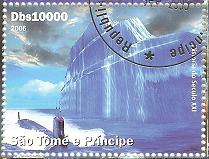|
The Seawolf class, US Navy’s SSN for the 21st century
 The Seawolf class attack submarine (SSN) was the intended successor to the Los Angeles class, ordered at the end of the Cold War in 1989. At one time, an intended fleet of 29 submarines was to be built over a ten-year period, later reduced to twelve. The end of the Cold War and budget constraints led to the cancellation in 1995 of any further additions to the fleet, leaving the Seawolf class limited to just three boats. This, in turn, led to the design of the smaller Virginia class. The Seawolf class attack submarine (SSN) was the intended successor to the Los Angeles class, ordered at the end of the Cold War in 1989. At one time, an intended fleet of 29 submarines was to be built over a ten-year period, later reduced to twelve. The end of the Cold War and budget constraints led to the cancellation in 1995 of any further additions to the fleet, leaving the Seawolf class limited to just three boats. This, in turn, led to the design of the smaller Virginia class.
Compared to previous Los Angeles class submarines, Seawolf subs are larger, faster, and significantly quieter; they also carry more weapons and have twice as many torpedo tubes, for a total of 8. As a result of their advanced design, however, Seawolf subs were much more expensive. They were intended to combat the then-threat of large numbers of advanced Soviet ballistic-missile submarines, such as the Typhoon and Akula classes, in a deep ocean environment.Seawolf hulls were constructed from HY-100 steel, rather than the weaker HY-80 steel employed in previous classes, to better withstand water pressure at greater depths. The boats also have extensive equipment for shallow-water operations, including a floodable silo capable of simultaneously deploying eight combat swimmers and their equipment. The boats carry up to 50 UGM-109 Tomahawk cruise missiles for attacking land and sea surface targets.
The class uses the more advanced ARCI Modified AN/BSY-2 combat system, which includes a new, larger spherical sonar array, a wide aperture array (WAA), and a new towed-array sonar. Each boat is powered by a single S6W nuclear reactor, delivering 45,500 hp (34 MW) to a low-noise screw.
Specifications, USS Seawolf SSN-21, Seawolf class:
The Sewolf class hull is of generally the same shape as that of the Los Angeles class with a larger beam- 9 feet/2.7 meters. The sail is specially strengthened for under ice operations and incorporates a large fillet at the forward end, design to improve waterflow over the structure.
Displacement (srf/sub tons): 8,050/9,142
Dimensions (L*B*D feet/meter): 353’0*42’0*36’0/107.6*12.8*11.0
Propulsion: 1*General Electric S6W Pressurized Water Reactor (PWR) 45,500hp, 2*geared steam turbine, 1*pumpjet propulsor, one screw
Speed (sub knots): 35+ (39)
Range (srf/sub miles@knots): not relevant
Diving depth (feet/meter): 1970/600
Complement: 14 officers 120 enlisted
Missile: Mc Donnell Douglas Sub Harpoon, SSM sub-launched anti-ship missiles or General Dynamics/Hughes Tomahawk cruise missiles TLAM for land attack or TASM for anti ship/ Normal load out of 12 Tomahawks
Torpedo: 8*26" (660 mm) torpedo tubes (external measurement is 30”/762 mm), total of 50 tube launched missiles or torpedoes- Gould Mk 48 ADCAP/Sub Harpoon/Tomahawk reloads.
Armament: none
Mines: can lay 100 MK67 Mobile and MK 60 Captor-in place of torpedo (2 mines for 1 torpedo)
Construction
A total of only 3 hulls (2+1) were constructed under this class all by the Electric Boat Div., General Dynamics Corp., Groton, CT.
USS Seawolf, SSN-21, launched June 1995.
USS Connecticut, SSN-22, launched September 1997.
USS Jimmy Carter, SSN-23, launched June 2004.
The USS Jimmy Carter is roughly 100 feet (30 m) longer than the other two ships of her class due to the insertion of a section known as the Multi-Mission Platform (MMP), which allows launch and recovery of ROVs (Remotely Operated Vehicles) and Navy SEAL forces (up to 50). The MMP may also be used as an underwater splicing chamber for tapping of undersea fiber optic cables. The Jimmy Carter was modified for this role by Electric Boat and cost $887 million.
The plug features a fairing over a wasp-waist shaped passageway allowing crew to pass between the fore and aft sections of the hull while providing a space to store ROVs and special equipment that may need to launch and recover from the submarine. According to figures published by Electric Boat, the MMP increased Carter`s displacement by about 33%, her navigation draft by over a foot (300 mm). It reduced her speed by some two knots (4 km/h). Carter has additional maneuvering devices fitted fore and aft that will allow her to keep station over selected targets in odd currents. Past submarines outfitted this way were used to tap undersea cables, to intercept communications of foreign countries.
Back to History Index
 |
Saint Thomas |
2006 |
US Submarine Seawolf class (SSN) |
|